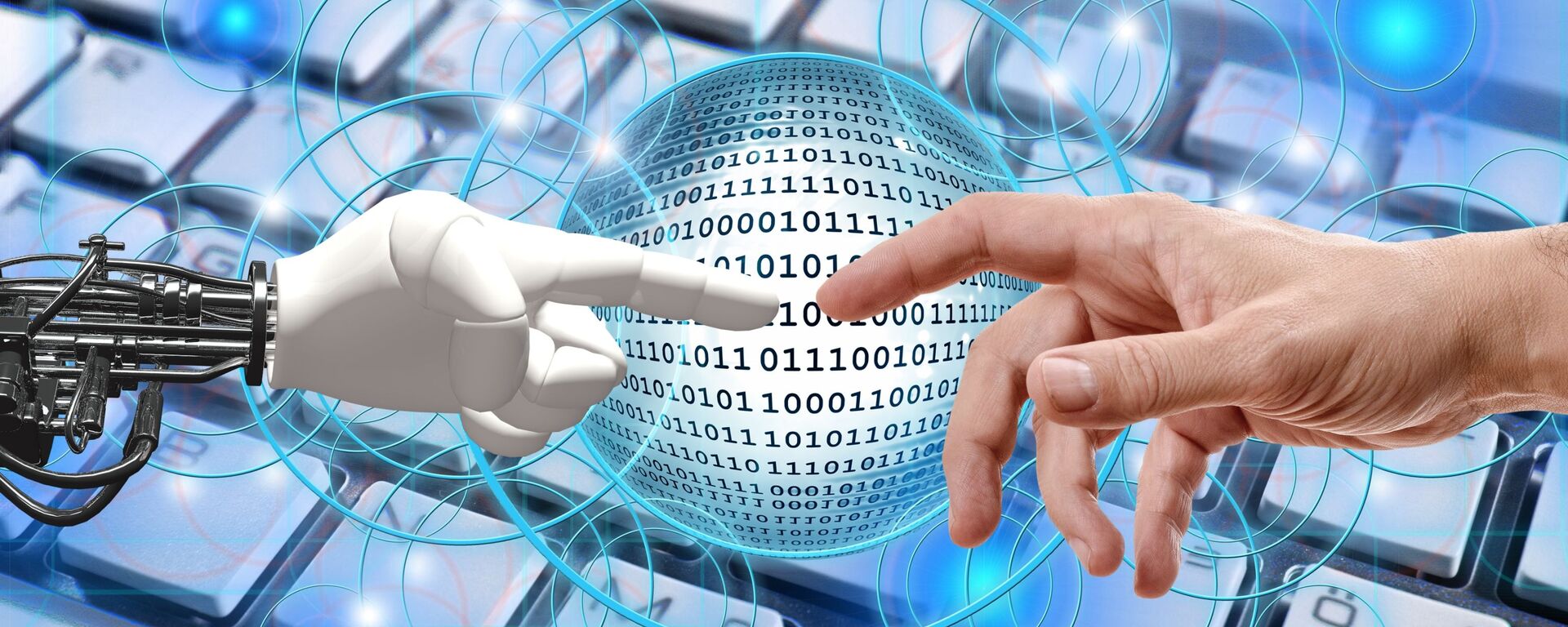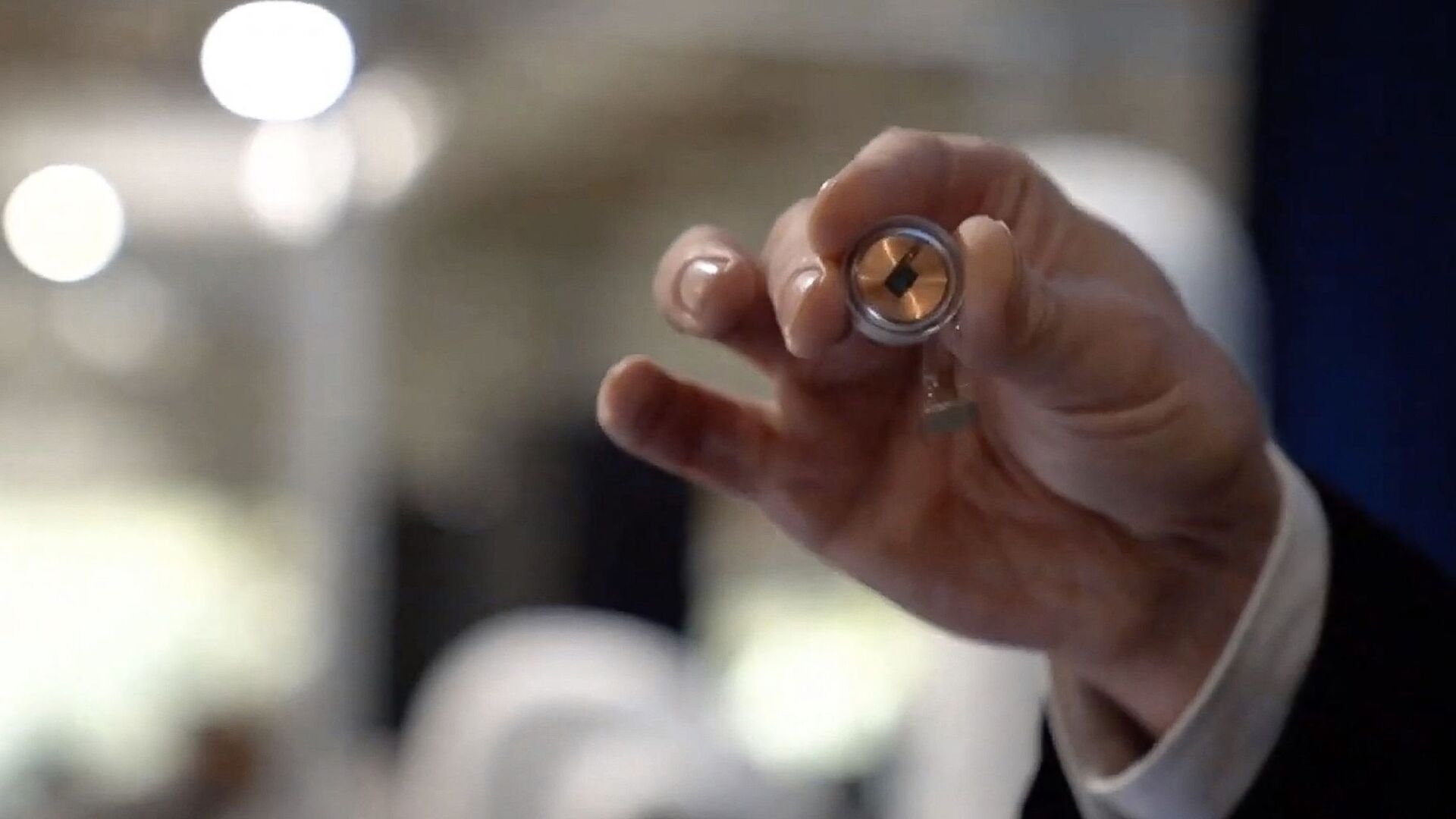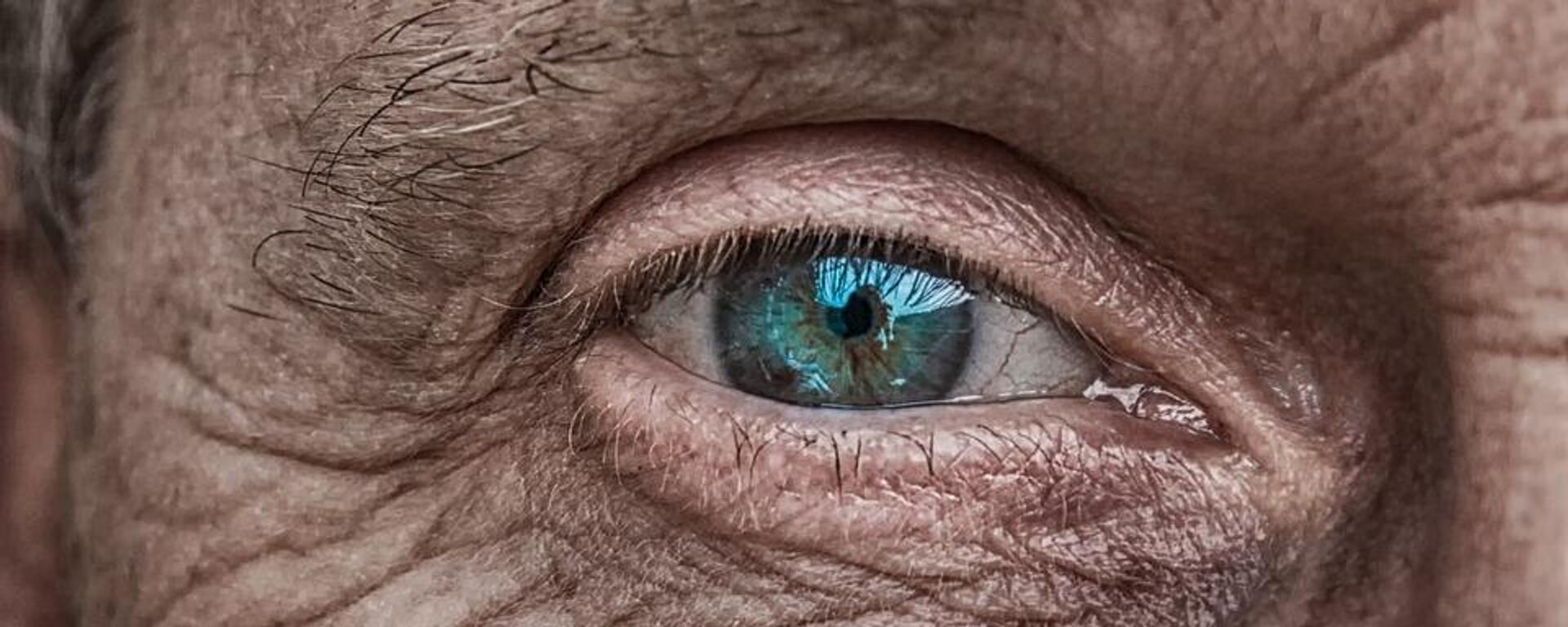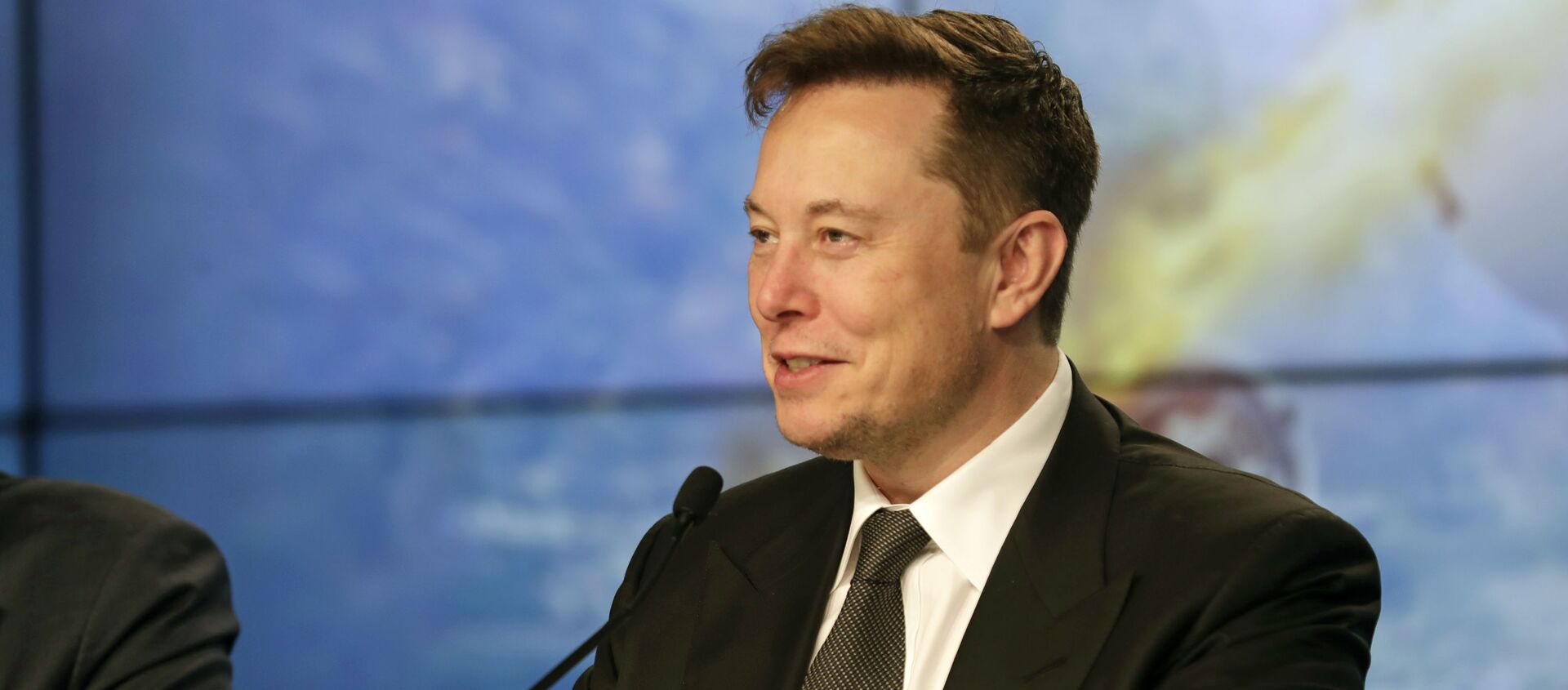https://sputnikglobe.com/20240726/just-the-beginning-neuralink-test-case-shows-promise-of-transformative-technology-1119511972.html
'Just the Beginning': Neuralink Test Case Shows Promise of Ambitious Technology
'Just the Beginning': Neuralink Test Case Shows Promise of Ambitious Technology
Sputnik International
Noland Arbaugh, the first patient to receive a computer chip implanted into his brain by Elon Musk’s company Neuralink, described his experience so far with the potentially transformative new technology in an interview with Sputnik.
2024-07-26T06:09+0000
2024-07-26T06:09+0000
2024-07-26T06:21+0000
society
elon musk
neuralink
us food and drug administration
beyond politics
https://cdn1.img.sputnikglobe.com/img/07e5/05/02/1082784672_106:216:2363:1486_1920x0_80_0_0_f030d4714ad28caaa6c29da2c200a1e8.jpg
AUSTIN (Sputnik), Lenka White - Noland Arbaugh, the first patient to receive a computer chip implanted into his brain by Elon Musk’s company Neuralink, described his experience so far with the potentially transformative new technology in an interview with Sputnik.He is currently building on his new skill to practice communication through complete written sentences.For over seven months Arbaugh, who is a quadriplegic, has had a computer chip implant embedded in his skull and an electrode array in his brain. In 2016 he suffered a severe spinal cord injury while swimming and became paralyzed from the shoulders down.Arbaugh's implant operates with the help of 1,024 electrodes spread across 64 threads. The implant has seen some electrodes retract due to the brain's natural movement, but Neuralink says it has since resolved the issue.'Imagined movement'Neuralink's N1 brain chip allows the user to control a computer's cursor solely by imagining the desired movement, Arbaugh told Sputnik.Arbaugh explained that it takes some time for the operating algorithm to learn how to move the cursor, but eventually it is "more than capable" of doing so.There are several ways to move the cursor, including by so-called "attempted movement," during which his brain signals for movement are picked up by the threads implanted in his brain’s motor cortex and translated into actions.Arbaugh said that with time, this attempted movement turns into the aforementioned imagined movement, but the transition was not intuitive and took about a week to figure out.Other devicesIn January Arbaugh underwent an approximately 30-minute long operation with Neuralink, which implanted the in-brain device in a human subject for the first time. The device is about the size of a coin but a bit thicker and is connected to his brain's motor cortex.Arbaugh's implant has been designed to record and transmit neural activity, allowing him to perform functions through a connected computer. He revealed that Neuralink's team is now aiming to install the application he uses for remote control onto other devices.As of now, much of the effort he exerts to control a cursor has to be "tweaked" given that there is no cursor control on telephones, he said.Driving and moreNeuralink’s pioneering N1 chip may be used in the future to enable operating a vehicle, Arbaugh told Sputnik."Maybe at some point in the study it's something that they will be able to do, hook me up to a car and let me test it out or something," he said, identifying the restoration of his ability to drive as among the most exciting prospects of the technology.Arbaugh added that the Neuralink implant may eventually help him control other devices such as telephones and gaming consoles as well as other assistive devices. Neuralink has said it aims to develop a comprehensive computer-brain interface that incorporates a generalized input and output device to enable interactions with all aspects of the brain.In May the US Food and Drug Administration (FDA) approved Neuralink’s request to implant its device into a second patient. Musk said the person should undergo the operation soon.
https://sputnikglobe.com/20240130/musk-says-his-startup-neuralink-has-implanted-first-brain-chip-in-a-human-1116481067.html
https://sputnikglobe.com/20240425/former-neuralink-president-launches-eye-implants-for-the-blind--1118103477.html
https://sputnikglobe.com/20221206/neuralink-is-symbiosis-between-human-brain--ai-worth-the-pain-and-risk-1105112440.html
https://sputnikglobe.com/20200711/elon-musk-says-his-brain-computer-chip-neuralink-will-be-able-to-cure-addiction-depression-1079859240.html
Sputnik International
feedback@sputniknews.com
+74956456601
MIA „Rossiya Segodnya“
2024
Sputnik International
feedback@sputniknews.com
+74956456601
MIA „Rossiya Segodnya“
News
en_EN
Sputnik International
feedback@sputniknews.com
+74956456601
MIA „Rossiya Segodnya“
Sputnik International
feedback@sputniknews.com
+74956456601
MIA „Rossiya Segodnya“
neuralink test case, first neuralink patient, elon musk brain chips, musk brain-computer interfaces, neuralink patient interview, sputnik interviews neuralink patient, controlling computer with brain, control cursor with mind
neuralink test case, first neuralink patient, elon musk brain chips, musk brain-computer interfaces, neuralink patient interview, sputnik interviews neuralink patient, controlling computer with brain, control cursor with mind
'Just the Beginning': Neuralink Test Case Shows Promise of Ambitious Technology
06:09 GMT 26.07.2024 (Updated: 06:21 GMT 26.07.2024) Neuralink founder Elon Musk says implantable brain-computer interfaces have the potential to change the lives of the disabled. The company's first human test case has shown significant promise.
AUSTIN (Sputnik), Lenka White - Noland Arbaugh, the first patient to receive a computer chip implanted into his brain by Elon Musk’s company Neuralink, described his experience so far with the potentially transformative new technology in an interview with Sputnik.
"We did fingerspelling, like sign language, which I thought is really, really cool," said Arbaugh, describing the communicative ability the procedure has restored to him. "I can fingerspell in sign language the alphabet and it seems that the algorithms picked that up really well."
He is currently building on his new skill to practice communication through complete written sentences.
For over seven months Arbaugh, who is a quadriplegic, has had a computer chip implant embedded in his skull and an electrode array in his brain. In 2016 he suffered a severe spinal cord injury while swimming and became paralyzed from the shoulders down.
Arbaugh's implant operates with the help of 1,024 electrodes spread across 64 threads. The implant has seen some electrodes retract due to the brain's natural movement, but Neuralink says it has since resolved the issue.

30 January 2024, 04:25 GMT
Neuralink's N1 brain chip allows the user to control a computer's cursor solely by imagining the desired movement, Arbaugh told Sputnik.
"I no longer have to attempt to move my hand in order to get the cursor to move. I just think that I want the cursor to move and it moves," Arbaugh said as he described what the company calls an "imagined movement."
Arbaugh explained that it takes some time for the operating algorithm to learn how to move the cursor, but eventually it is "more than capable" of doing so.
There are several ways to move the cursor, including by so-called "attempted movement," during which his brain signals for movement are picked up by the threads implanted in his brain’s motor cortex and translated into actions.
Arbaugh said that with time, this attempted movement turns into the aforementioned imagined movement, but the transition was not intuitive and took about a week to figure out.
In January Arbaugh underwent an approximately 30-minute long operation with Neuralink, which implanted the in-brain device in a human subject for the first time. The device is about the size of a coin but a bit thicker and is connected to his brain's motor cortex.
Arbaugh's implant has been designed to record and transmit neural activity, allowing him to perform functions through a connected computer. He revealed that Neuralink's team is now aiming to install the application he uses for remote control onto other devices.
"They're trying to figure it out for a Mac at this point," Arbaugh explained. "[What] they would be able to do is just take that application and upload it onto really any device: onto a phone, on a different computer, onto a tablet, anything like that, and I would be able to control it."
As of now, much of the effort he exerts to control a cursor has to be "tweaked" given that there is no cursor control on telephones, he said.

6 December 2022, 17:03 GMT
Neuralink’s pioneering N1 chip may be used in the future to enable operating a vehicle, Arbaugh told Sputnik.
"Maybe at some point in the study it's something that they will be able to do, hook me up to a car and let me test it out or something," he said, identifying the restoration of his ability to drive as among the most exciting prospects of the technology.
Arbaugh added that the Neuralink implant may eventually help him control other devices such as telephones and gaming consoles as well as other assistive devices. Neuralink has said it aims to develop a comprehensive computer-brain interface that incorporates a generalized input and output device to enable interactions with all aspects of the brain.
"This all is just the beginning," Arbaugh claimed enthusiastically. "We are only six months in."
In May the US Food and Drug Administration (FDA) approved Neuralink’s request to implant its device into a second patient. Musk said the person should undergo the operation soon.






